
CounterPunch (January 13, 2016)
Countercurrents (January 20, 2016)
Copyright © 2016 Marc Norton
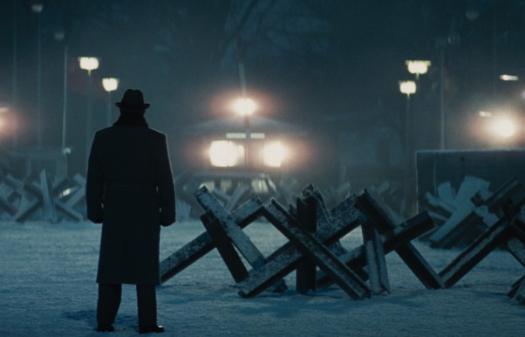 |
Tom Hanks is today’s Everyman good guy movie star – an honest, trustworthy and stand-up white man just like Gary Cooper, Jimmy Stewart, Gregory Peck and, yes, even John Wayne. In the recent film Bridge of Spies, one of those “inspired by true events” obfuscations, Hanks plays a certain James B. Donovan. In the movie, Donovan is an insurance lawyer lured into defending Soviet spy Rudolf Abel back in the good old days of the Cold War in order to prove that this is the land of justice and due process. Bridge of Spies, directed by Steven Spielberg, appears to be headed into Oscar territory.
Sometimes it pays to read the book on which an “inspired by true events” movie is based. If a discerning filmgoer were to read Strangers on a Bridge, Donovan’s account of the events portrayed in the movie, one would discover that Donovan was no mere insurance lawyer, but was involved in the spy business up to his ears long before Abel was arrested in 1957. Donovan was in fact the General Counsel of the Office of Strategic Services (OSS) during World War II. The OSS was set up during the war as the chief intelligence agency for the United States to coordinate espionage and counterespionage, including black propaganda and the proverbial special operations. That must have been some interesting lawyering.
The OSS morphed into the Central Intelligence Agency (CIA) after the war. Donovan states matter-of-factly in his book that he drafted a “postwar plan for a central intelligence agency, to carry on after our OSS was disbanded. When Major General William J. [‘Wild Bill’] Donovan [the director of the OSS, no relation to our protagonist, James B. Donovan] directed me, as his general counsel, to draft such a plan, he repeatedly stressed the necessary differences between secret intelligence and counterintelligence on an international level and the constitutional bounds of domestic law enforcement within the United States. He believed that any attempted unification of such powers in a single government agency would be dangerous in a democracy, since the temptation to ‘efficient’ methods of investigation inevitably leads to creating a Gestapo.”
We all know how that worked out.
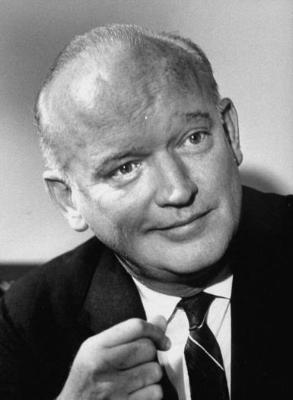 | | James B. Donovan |
After the war, Donovan was a prosecutor at Nuremberg, which is acknowledged in Bridge of Spies. Donovan must have at least noticed that the Nuremberg trials were shut down to facilitate the recruitment of Nazi war criminals into the U.S. intelligence network, but that is not acknowledged in either the film or Donovan’s book.
Both during the war, after the war, and up through Donovan’s activities around the Abel spy trial, he “held a commission as a commander in Naval Intelligence.” As late as 1967, Donovan wrote that criticism of the CIA and U.S. intelligence programs was the result of “a brand of addle-pated thinking.”
Donovan was upfront with Abel about his history with the intelligence community, and “had the feeling” that Abel “felt at ease with me because of my OSS background. He had found someone with whom he could ‘talk shop.’”
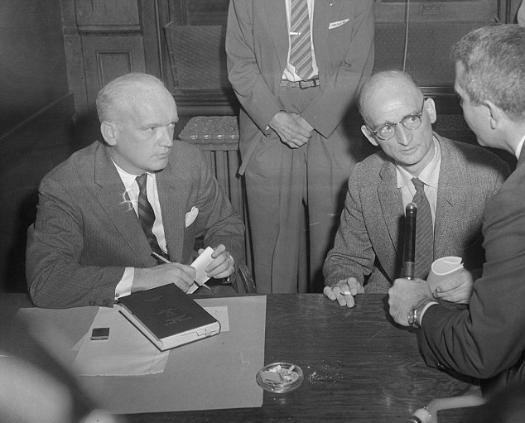 | | Donovan and Abel |
Abel was ultimately convicted in 1957 of spying, and sentenced to 30 years in prison. Five years later, in 1962, Abel was traded for the captured CIA pilot Francis Gary Powers, who had been shot down in a U2 spy plane over the Soviet Union. Donovan served as the U.S. negotiator to execute this trade.
In the movie, Donovan is a reluctant recruit as the negotiator. In Donovan’s book, he is the instigator. Donovan describes a proposal he made for a trade, even before Abel’s trial, a proposal that he made in a personal meeting with then-CIA chief Allen Dulles. That proposal did not fly, but when the Powers exchange was proposed several years later, Donovan “readily agreed” to go to Berlin and negotiate the deal, and clearly relished his role in the affair. The book describes these negotiations in depth, although Donovan notes that “there have been certain necessary deletions and alterations of detail, for reasons of security.”
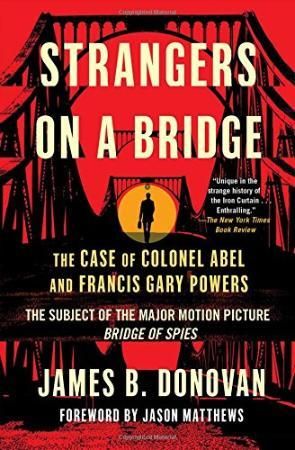 Donovan published his book in 1964, just two years after the Abel/Powers exchange. Dulles gave the book a rave review in the New York Times Book Review. “Unique in the strange history of the Iron Curtain… Enthralling… A truly remarkable account of how the author fulfilled his stewardship as a lawyer and as a negotiator. He has done us a real service in writing this engrossing and forthright book.” Back in those days, no one published such books without CIA approval beforehand. Donovan published his book in 1964, just two years after the Abel/Powers exchange. Dulles gave the book a rave review in the New York Times Book Review. “Unique in the strange history of the Iron Curtain… Enthralling… A truly remarkable account of how the author fulfilled his stewardship as a lawyer and as a negotiator. He has done us a real service in writing this engrossing and forthright book.” Back in those days, no one published such books without CIA approval beforehand.
Dulles, of course, had been infamously sacked as head of the CIA by President John Kennedy in 1961, after the Bay of Pigs fiasco. But by 1964, when Donovan published his book, Kennedy was dead and Dulles was still in the thick of the spook world.
Donovan’s book was reissued in 2015, in advance of the movie, with a new foreword by another spook, Jason Matthews. According to Matthews’ website, he is “a retired officer of the CIA’s Operations Directorate.” He also writes fiction, and appears to be popular with the spy novel set. Despite his credentials, Matthews notably gets Abel’s sentence wrong, stating that he got 45 years when in fact he got 30. Donovan died in 1970, and consequently did not get a chance to proofread Matthews’ foreword.
Both Matthews and Bridge of Spies director Spielberg appear to have a thing about the Rosenbergs, who figure into the story in an important way. Julius and Ethel Rosenberg were executed in 1953, convicted of spying for the Soviet Union and for allegedly giving away the “secret” of the atomic bomb. In the movie, one of the early signs of trouble is a line from Hanks (playing Donovan) unfavorably comparing the Rosenbergs to Abel, claiming that if Abel was a spy he was only serving his country, while the Rosenbergs were traitors who had betrayed their country.
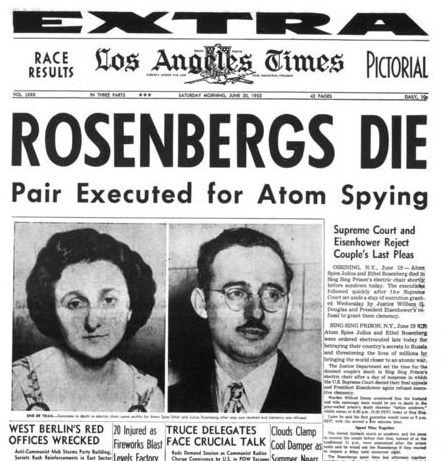 |
It is a tenet of bourgeois ideology that working class people owe their loyalty, first and foremost, to their country, not to their class brothers and sisters around the world. Donovan’s comparison of Abel to the Rosenbergs is grounded firmly in this logic. Of course, the bourgeoisie hold themselves to a different standard, to the solidarity of profit wherever they can get it. Today, that is called “globalization.”
Bridge of Spies fails even to acknowledge that there has been extensive debate about whether or not the Rosenbergs were actually guilty of spying for the Soviets, or that there was a significant, worldwide mass movement in opposition to their execution even during that period of McCarthyism and Cold War repression. Over the intervening years, many have come to believe that Julius Rosenberg was indeed a spy, largely based on alleged evidence from CIA documents that were released to the public in the 1990s after the fall of the Soviet Union. More recently, the Grand Jury testimony of David Greenglass was declassified. Greenglass, the brother of Ethel Rosenberg, was the chief witness against the Rosenbergs. Some brother. Greenglass’ Grand Jury testimony clearly confirms that he lied his ass off at the Rosenberg trial, with the full cooperation of the prosecution.
But to Matthews and Spielberg the Rosenbergs were just traitors, no doubt about it. Due process and all that be damned.
Curiously, Donovan seems to take a more nuanced view of the Rosenbergs in his book. He makes the same comparison to the Rosenbergs’ alleged betrayal of their country to Abel’s alleged service to his country, but never pronounces the Rosenbergs guilty. He instead repeatedly notes the crimes for which they were “convicted.” These are the words of a man who was intimately familiar with black propaganda. Donovan even notes that “at the Rosenberg espionage trial, defense counsel had made a mistake which plagued him at every step of his appeals, by thanking the trial judge for the ‘fair’ manner in which he had presided.”
Matthews’ foreword, like the movie, appears to be “inspired by true events” rather than the true story it purports to be. He spins a tale of the “most successful HUMINT (human intelligence) operation in the twentieth century… the Soviet Union’s penetration of The Manhattan Project and the acquisition of U.S. atom secrets in the 1940s and 1950s… designated ‘Task Number One’ by Joseph Stalin.” Despite this purple prose, Matthews notes that “debate continues regarding which and how many top secrets the Soviet Union actually filched, and whether the information materially helped the Russians.” He further claims that the alleged Soviet intelligence agents never shared their “purloined atom secrets” with Soviet scientists. “Rather,” Matthews writes, Soviet spy chief “Lavrentia Beria mostly used U.S. data to slyly corroborate the theoretical and design work of Soviet scientists.” Matthews cites no sources for any of this.
According to Matthews, Abel was sent to the U.S. by Moscow in 1948 to “re-energize… the network of atom spies.” The Rosenbergs were “important network couriers and spotters” who were “arrested thanks to the confession and testimony of another network source, David Greenglass.” That’s the same Greenglass who perjured himself at the trial, at the behest of the prosecution, and got his sister executed. Abel was the “central controller known to many of the couriers [but]… the jailed Rosenbergs steadfastly would not cooperate with the FBI, not even in exchange for their lives.”
You can believe Matthews’ scenario, or not. But Donovan doesn’t go there, or anywhere near there. According to Donovan’s account, not a word about the Rosenbergs was ever spoken at Abel’s trial, by either the prosecution or the defense. Matthews’ foreword would be better read as an afterword, so his tale doesn’t cloud Donovan’s story, and can be read as the revisionist history that it is.
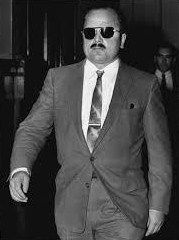 The Rosenbergs did figure into the trial in an oblique way, but one so comical that Matthews does not even bring it up. The chief witness against Abel at his trial was a drunkard named Reino Hayhanen, who claimed to have been Abel’s spy buddy until he defected and turned snitch. Among other things, Hayhanen testified that he and Abel had buried $5,000 in a park somewhere so it could be picked up by “Agent Stone’s wife.” Agent Stone’s wife was allegedly Helen Sobell. Helen Sobell was married to Morton Sobell, who had been convicted as an alleged accomplice of the Rosenbergs and sentenced to 30 years in prison. So the headlines in the newspapers on the day Hayhanen first testified about the burial of $5,000 read “LINK ABEL TO ROSENBERGS.” The Rosenbergs did figure into the trial in an oblique way, but one so comical that Matthews does not even bring it up. The chief witness against Abel at his trial was a drunkard named Reino Hayhanen, who claimed to have been Abel’s spy buddy until he defected and turned snitch. Among other things, Hayhanen testified that he and Abel had buried $5,000 in a park somewhere so it could be picked up by “Agent Stone’s wife.” Agent Stone’s wife was allegedly Helen Sobell. Helen Sobell was married to Morton Sobell, who had been convicted as an alleged accomplice of the Rosenbergs and sentenced to 30 years in prison. So the headlines in the newspapers on the day Hayhanen first testified about the burial of $5,000 read “LINK ABEL TO ROSENBERGS.”
But the very next day, under further questioning, Hayhanen testified that “Agent Stone’s wife” never got the $5,000 – because Hayhanen went back to the site where he and Abel had allegedly buried the money. “I digged them out and I kept them myself,” he explained in his broken English.
Spielberg’s movie leaves Hayhanen completely out of the picture. “Inspired by true events” indeed. Matthews cites Hayhanen as the turncoat who fingered Abel, but conveniently doesn’t go into any of his trial testimony, which also included a confession that he was a bigamist and his acknowledgement that he had signed a document claiming that he had never been a spy. Donovan writes that Hayhanen was “killed in a mysterious automobile crash on the Pennsylvania Turnpike” four years later.
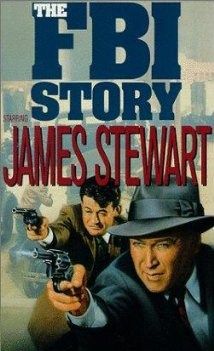 Adding to the comedic aspect of the Abel spy case, Abel’s arrest was imaginatively portrayed in the 1959 Warner Brothers movie, The FBI Story, starring old reliable Jimmy Stewart, directed by Mervin LeRoy, with the full cooperation of J. Edgar Hoover himself. If Donovan ever saw this movie, he must have gotten a good laugh. Adding to the comedic aspect of the Abel spy case, Abel’s arrest was imaginatively portrayed in the 1959 Warner Brothers movie, The FBI Story, starring old reliable Jimmy Stewart, directed by Mervin LeRoy, with the full cooperation of J. Edgar Hoover himself. If Donovan ever saw this movie, he must have gotten a good laugh.
Both Bridge of Spies and Donovan’s book tell the tale of the appeal of Abel’s conviction, an appeal that Donovan took all the way to the Supreme Court. The court upheld the conviction on a narrow 5-4 vote.
Donovan’s book ends on an ironic note that is missing from the movie, a coda to the failed Supreme Court appeal. A few days after Abel had been traded to the Soviets for Powers, Donovan emerged from his Georgetown church, and ran into Supreme Court Justice William Brennan. Brennan had written the opinion for the four dissenters. The majority opinion had been written by Justice Felix Frankfurter.
“Please do me one favor,” Donovan asked of Justice Brennan. “Present my highest personal regards to Mr. Justice Frankfurter and tell him I finally have found an effective way to set aside a judgment of the Supreme Court of the United States.”
Spoken like a true spook.
 | | Kennedy and Donovan |
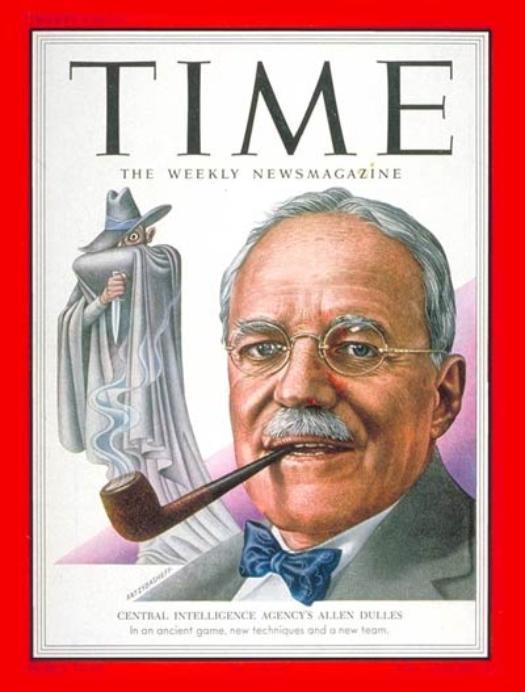 | | Allen Dulles |
|